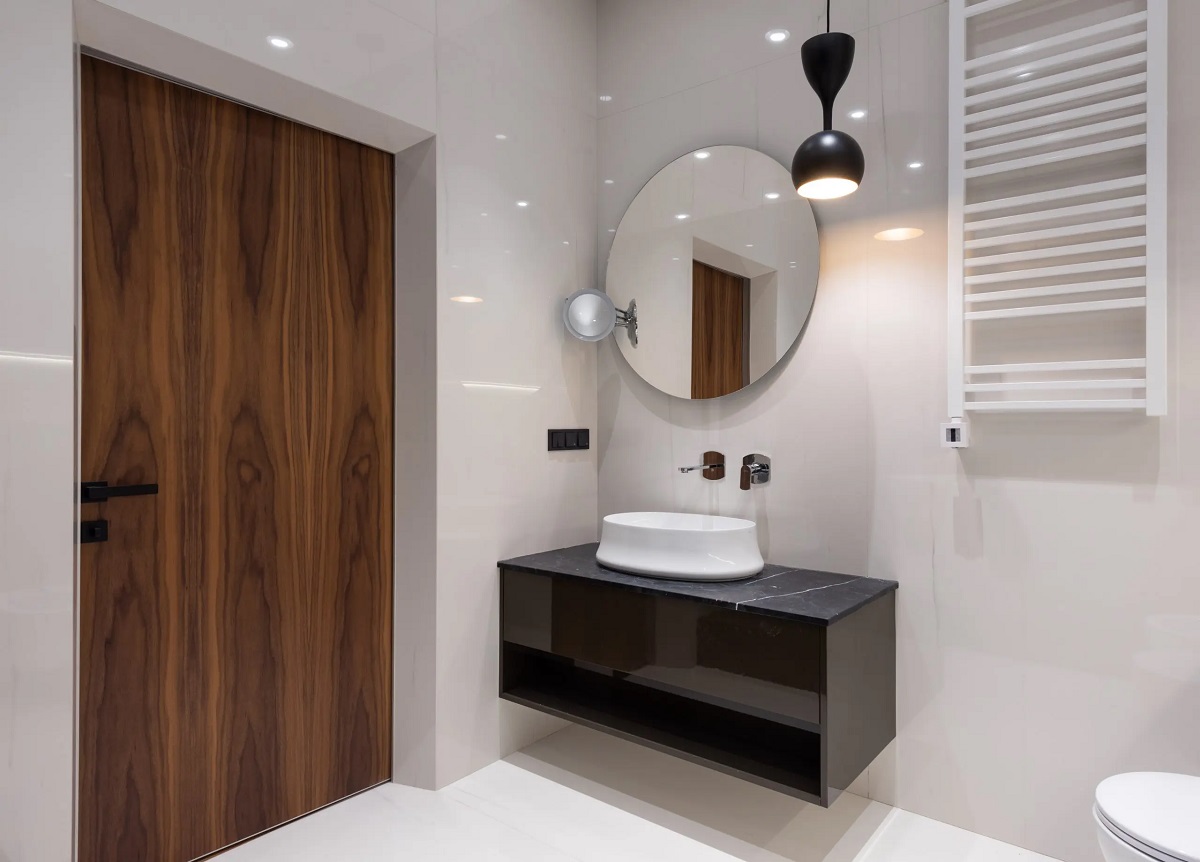

Articles
What Is The Standard Bathroom Vanity Height
Modified: May 6, 2024
Learn about the standard bathroom vanity height and get helpful tips in our informative articles. Achieve the perfect bathroom design with the right vanity height.
(Many of the links in this article redirect to a specific reviewed product. Your purchase of these products through affiliate links helps to generate commission for Storables.com, at no extra cost. Learn more)
Introduction
When it comes to designing or remodeling a bathroom, there are numerous factors to consider. One important element that often gets overlooked is the height of the bathroom vanity. The vanity serves as the centerpiece of the bathroom and plays a crucial role in both functionality and aesthetics. Understanding the standard bathroom vanity height and its implications can help you create a space that is not only visually appealing but also comfortable and practical.
In this article, we will delve into the world of bathroom vanity heights. We will explore the history of vanity height, the factors that influence it, standard measurements, regional variations, popular trends, and key considerations for choosing the right height for your bathroom vanity.
Whether you are planning a small-scale bathroom renovation or a complete overhaul, understanding the nuances of bathroom vanity heights will empower you to make informed decisions and create a bathroom that not only meets your needs but also reflects your personal style.
Key Takeaways:
- Understanding the historical evolution and factors influencing bathroom vanity height is crucial for creating a comfortable and visually appealing space that meets the needs of users of all heights and abilities.
- By considering standard measurements, regional variations, and popular trends, along with user needs, ergonomics, and personal preferences, you can select the perfect bathroom vanity height to enhance the functionality and aesthetic appeal of your space.
History of Bathroom Vanity Height
The concept of bathroom vanities can be traced back to ancient civilizations. In ancient Egypt, for example, pharaohs and high-ranking officials had luxurious bathrooms with ornate and elevated cabinets or tables known as “bathing stands.” These stands were used to hold washbasins and other toiletries during daily grooming rituals.
Over time, as indoor plumbing and modern sanitation systems were developed, bathrooms evolved from practical spaces to areas of relaxation and self-care. The need for storage and countertop space led to the emergence of bathroom vanities as we know them today.
In the 19th century, bathroom vanities became increasingly popular in upper-class households. These vanities often featured intricate woodwork, marble or granite tops, and porcelain sinks. At this time, the standard height for bathroom vanities was typically lower than what is considered standard in modern times.
During the 20th century, as bathrooms became more commonplace in average households, bathroom vanities underwent further transformations. The standard height started to increase to accommodate the average height of an adult. This change was influenced by ergonomic principles and the desire for greater comfort and ease of use.
In recent years, with the rising popularity of minimalist and contemporary design styles, there has been a shift towards lower bathroom vanity heights. This trend emphasizes clean lines and a sleek aesthetic, often resulting in vanities that are slightly lower than traditional standards.
It is important to note that the history of bathroom vanity height is not set in stone, and there is no one-size-fits-all approach. The height of a bathroom vanity can vary depending on personal preference, cultural norms, and the specific needs and physical characteristics of the individuals using the space.
Now that we have explored the historical background of bathroom vanity height, let’s delve into the factors that influence this crucial design element.
Factors Influencing Bathroom Vanity Height
Choosing the right height for your bathroom vanity is essential to ensure comfort and functionality. Several factors come into play when determining the appropriate height. Let’s take a closer look at these factors:
- User Height: The height of the primary users of the bathroom should be taken into consideration. Taller individuals may prefer a higher vanity to avoid stooping or straining, while shorter individuals may find a lower vanity more comfortable to use.
- Ergonomics: Ergonomics plays a crucial role in determining the ideal vanity height. The countertop surface should be at a level that allows users to comfortably reach items, wash their hands, and apply makeup without excessive bending or stretching.
- Accessibility Requirements: If the bathroom needs to be accessible for individuals with mobility challenges or in compliance with accessibility guidelines, it is important to consider appropriate vanity height. This may involve a lower vanity height to accommodate wheelchair users or individuals with limited mobility.
- Child-Friendly Design: If the bathroom will be used by children, it is important to consider a vanity height that is appropriate for their height. A lower vanity, or the inclusion of a step stool, can enable children to comfortably reach the sink and perform daily tasks independently.
- Style and Design Aesthetics: The overall style and design of the bathroom should be taken into account when determining vanity height. Some design styles, such as modern or minimalist, may call for lower vanity heights to create a sleek and streamlined look. Traditional or classic design styles, on the other hand, often feature higher vanity heights for a more regal and elegant feel.
- Plumbing Considerations: The location and configuration of plumbing fixtures can also impact vanity height. If the existing plumbing is not easily adjustable, it may be necessary to work around the constraints of the plumbing to determine the optimal vanity height.
These factors are not exhaustive, and it is important to consider your specific needs and preferences when choosing the bathroom vanity height. It is recommended to consult with a professional designer or contractor who can take all these factors into account and provide expert guidance.
Now that we understand the factors that influence bathroom vanity height, let’s move on to the standard measurements used in the industry.
Standard Bathroom Vanity Height Measurements
While there isn’t a definitive standard height for bathroom vanities, there are generally accepted measurements that are commonly used in the industry. These measurements are based on ergonomic principles and the average height of adults. Let’s explore the standard bathroom vanity height measurements:
- Standard Height: The standard height for a bathroom vanity typically ranges between 32 inches (81 cm) and 36 inches (91 cm). This measurement includes the height of the countertop and the sink. The standard height is suitable for most adults and provides a comfortable experience while using the vanity.
- Comfort Height: In recent years, there has been a growing trend towards comfort height bathroom vanities. These vanities are slightly taller, typically ranging from 36 inches (91 cm) to 42 inches (107 cm). The increased height is designed to accommodate taller individuals and promote better ergonomics by reducing bending and strain on the back.
- Vessel Sink Height: If you are using a vessel sink, which sits on top of the countertop, the vanity height may need to be adjusted accordingly. Vessel sinks typically require a lower vanity height to ensure the sink rim is at a comfortable level for users.
- Wall-Mounted Vanities: Wall-mounted vanities offer flexibility in terms of height since they can be installed at a custom height based on individual preferences. The height can be adjusted to accommodate the needs of all users, including those with mobility challenges or varying heights.
It is important to note that these standard measurements are general guidelines and may vary depending on personal preference, cultural norms, and the specific requirements of your space. It is recommended to consider the factors mentioned earlier and consult with a professional designer or contractor to determine the most suitable height for your bathroom vanity.
Now that we have explored the standard height measurements, let’s delve into how bathroom vanity heights can vary by region.
The standard bathroom vanity height is typically 32 inches. However, it can range from 30 to 36 inches. When choosing a vanity, consider the height of the users and the overall design of the bathroom.
Variations in Bathroom Vanity Height by Region
While there are commonly accepted standard measurements for bathroom vanity height, it is important to note that these measurements can vary by region and cultural practices. Different countries and regions may have their own preferences and norms when it comes to bathroom design. Let’s explore some of the notable variations in bathroom vanity height by region:
- North America: In North America, the standard height for bathroom vanities typically follows the range of 32 inches (81 cm) to 36 inches (91 cm). This height is tailored to the average height of adults in the region and provides a comfortable and functional experience for most users.
- Europe: In European countries, including the United Kingdom and continental Europe, the standard height for bathroom vanities tends to be slightly lower than in North America. Heights ranging from 29 inches (74 cm) to 34 inches (86 cm) are more common, reflecting European design sensibilities and ergonomic considerations.
- Asia: In many Asian countries, particularly those with a strong influence from Japanese and Korean cultures, the bathroom vanity height can be lower compared to other regions. This is often influenced by a focus on minimalist design and the use of floor-mounted or wall-mounted vanities. Heights ranging from 27 inches (69 cm) to 32 inches (81 cm) are often seen in these regions.
- Middle East: In Middle Eastern countries, such as Saudi Arabia and the United Arab Emirates, bathroom vanities are typically higher compared to other regions. Heights ranging from 36 inches (91 cm) to 42 inches (107 cm) or even higher are common. This is influenced by cultural practices and a desire for opulent and luxurious bathroom spaces.
These variations in bathroom vanity height by region highlight the significance of cultural norms, design preferences, and regional practices. It is important to consider these factors when planning a bathroom design to create a space that is not only functional but also culturally appropriate and appealing to the target audience.
Now that we have explored the variations in bathroom vanity height by region, let’s move on to popular trends in this aspect of bathroom design.
Read more: What Height Is A Bathroom Vanity
Popular Trends in Bathroom Vanity Heights
As with any other aspect of interior design, bathroom vanity heights are subject to evolving trends and preferences. These trends are influenced by changing design styles, technological advancements, and the desire for both aesthetics and functionality. Let’s explore some of the popular trends in bathroom vanity heights:
- Comfort Height Vanities: One of the prominent trends in recent years is the popularity of comfort height vanities. These vanities are slightly taller than standard heights, ranging from 36 inches (91 cm) to 42 inches (107 cm). The increased height offers improved ergonomics and a more comfortable experience for taller individuals, reducing strain on the back and knees.
- Low-Profile Vanities: In contrast to comfort height vanities, there has been a rising trend towards low-profile or low-height vanities. These vanities are shorter than the standard height, often ranging from 29 inches (74 cm) to 34 inches (86 cm). Low-profile vanities give the bathroom a sleek and minimalist look, particularly popular in contemporary and modern design styles.
- Vessel Sinks and Raised Countertops: Another trend that has influenced bathroom vanity heights is the use of vessel sinks and raised countertops. Vessel sinks sit on top of the countertop, requiring a lower vanity height to maintain a comfortable sink rim level. This trend has led to the use of custom heights to accommodate vessel sinks and create a visually appealing focal point in the bathroom.
- Adjustable Height Vanities: With the advancement of technology and innovative design solutions, adjustable height vanities have gained popularity. These vanities offer the flexibility to adjust the height according to individual preferences or accessibility needs. This trend caters to individuals with varying heights or mobility challenges, ensuring a comfortable and inclusive bathroom experience.
It’s worth noting that these trends are not mutually exclusive, and many designers and homeowners often incorporate a combination of these elements to achieve their desired look and functionality. Ultimately, the choice of bathroom vanity height should be driven by personal preference, the specific needs of the users, and the overall design aesthetic of the space.
Now that we have explored popular trends in bathroom vanity heights, let’s consider some key considerations for choosing the right height for your bathroom vanity.
Considerations for Choosing the Right Bathroom Vanity Height
Choosing the right bathroom vanity height requires thoughtful consideration of various factors to ensure comfort, functionality, and a visually appealing design. Here are some key considerations to keep in mind when determining the perfect height for your bathroom vanity:
- User Needs: Consider the needs and preferences of the primary users of the bathroom. Take into account their height, any mobility challenges, and whether the space will be used by children. This will help determine the most suitable vanity height that caters to everyone’s needs.
- Ergonomics: Prioritize ergonomic principles when selecting the vanity height. The countertop surface should be at a comfortable level to prevent excessive bending or stretching. This promotes ease of use and reduces strain on the body during daily tasks such as brushing teeth or washing hands.
- Style and Aesthetics: Consider the overall design style and aesthetic of your bathroom. The vanity height should align with the chosen theme or style. For example, modern and minimalist designs often favor lower vanity heights for a sleek and streamlined look, while traditional or classic styles may call for higher vanity heights for a more refined and grand appearance.
- Plumbing Considerations: Take into account the location and configuration of the plumbing fixtures. If the plumbing is not easily adjustable, it may limit the options for the vanity height. Work with a professional if modifications are needed to accommodate the desired vanity height while maintaining proper plumbing functionality.
- Accessibility: If the bathroom needs to be accessible for individuals with mobility challenges or in compliance with accessibility guidelines, it is crucial to consider vanity height. Lower vanity heights or the inclusion of features like adjustable heights can enhance accessibility and ensure that everyone can use the bathroom comfortably and independently.
- Personal Preferences: Ultimately, your personal preferences should play a significant role in determining the vanity height. Consider what feels most comfortable and visually appealing to you. If possible, try out different vanity heights in showrooms or mock-up spaces to get a better sense of what works best for you.
By carefully considering these factors, you can choose the right bathroom vanity height that meets your practical needs, reflects your style, and creates a harmonious and functional bathroom space.
Now that we have explored the considerations for choosing the right bathroom vanity height, let’s summarize the main points discussed in this article.
Summary
Choosing the right height for your bathroom vanity is crucial for creating a comfortable and functional space. Throughout this article, we have explored various aspects related to bathroom vanity heights, including their history, factors influencing their height, standard measurements, regional variations, popular trends, and considerations for selecting the appropriate height. Here are the key takeaways:
– The concept of bathroom vanities dates back to ancient civilizations, and over time, they have evolved to become the centerpiece of modern bathrooms.
– Factors influencing bathroom vanity height include user height, ergonomics, accessibility requirements, child-friendliness, style and design aesthetics, and plumbing considerations.
– Standard bathroom vanity height measurements often range from 32 inches to 36 inches, while comfort height vanities are slightly taller, and low-profile vanities are shorter.
– Variations in bathroom vanity height exist by region, with North America, Europe, Asia, and the Middle East having their own preferences and norms.
– Popular trends in bathroom vanity heights include comfort height vanities, low-profile vanities, vessel sinks and raised countertops, and adjustable height vanities.
– When selecting the right bathroom vanity height, it is essential to consider user needs, ergonomics, style and aesthetics, plumbing considerations, accessibility requirements, and personal preferences.
By taking these factors into account and seeking professional advice when necessary, you can ensure that your chosen bathroom vanity height enhances the overall functionality, comfort, and aesthetic appeal of your bathroom space.
Curious about sprucing up your bathroom? Wondering how long refurbishing this essential space might take? Our detailed guide on bathroom renovation timelines offers valuable insights, ensuring you plan effectively. Or perhaps you're considering a dedicated spot for applying makeup. Our article on the ideal vanity height for a makeup station provides the specifications needed for comfort and functionality. Both pieces are packed with advice to help tailor your space to your needs.
Frequently Asked Questions about What Is The Standard Bathroom Vanity Height
Was this page helpful?
At Storables.com, we guarantee accurate and reliable information. Our content, validated by Expert Board Contributors, is crafted following stringent Editorial Policies. We're committed to providing you with well-researched, expert-backed insights for all your informational needs.
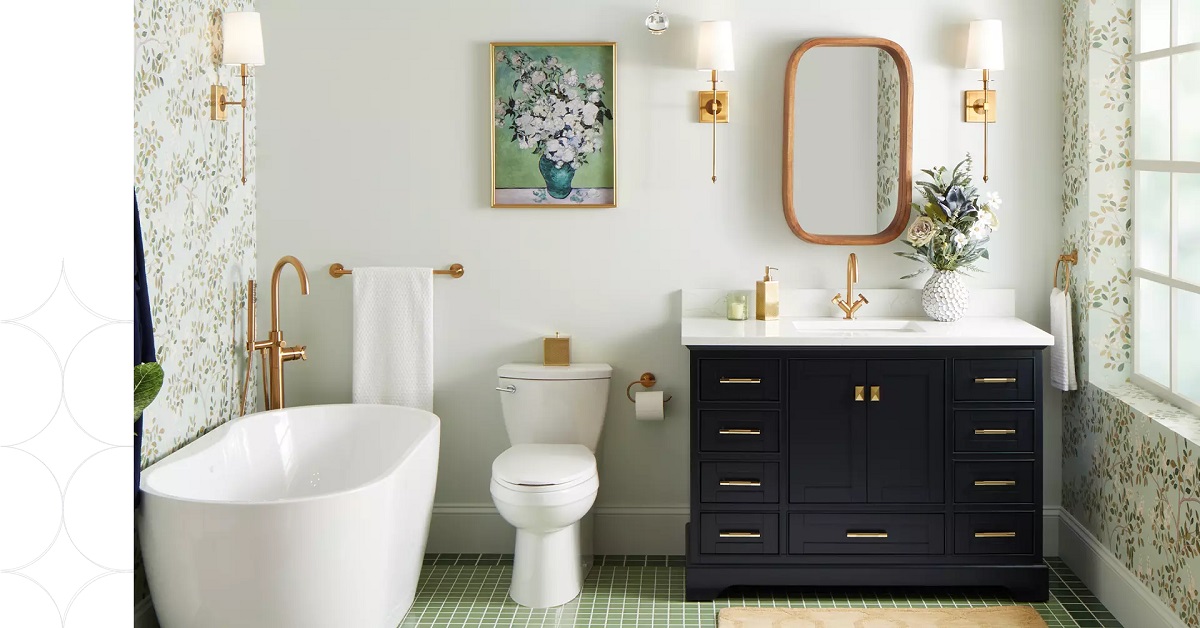
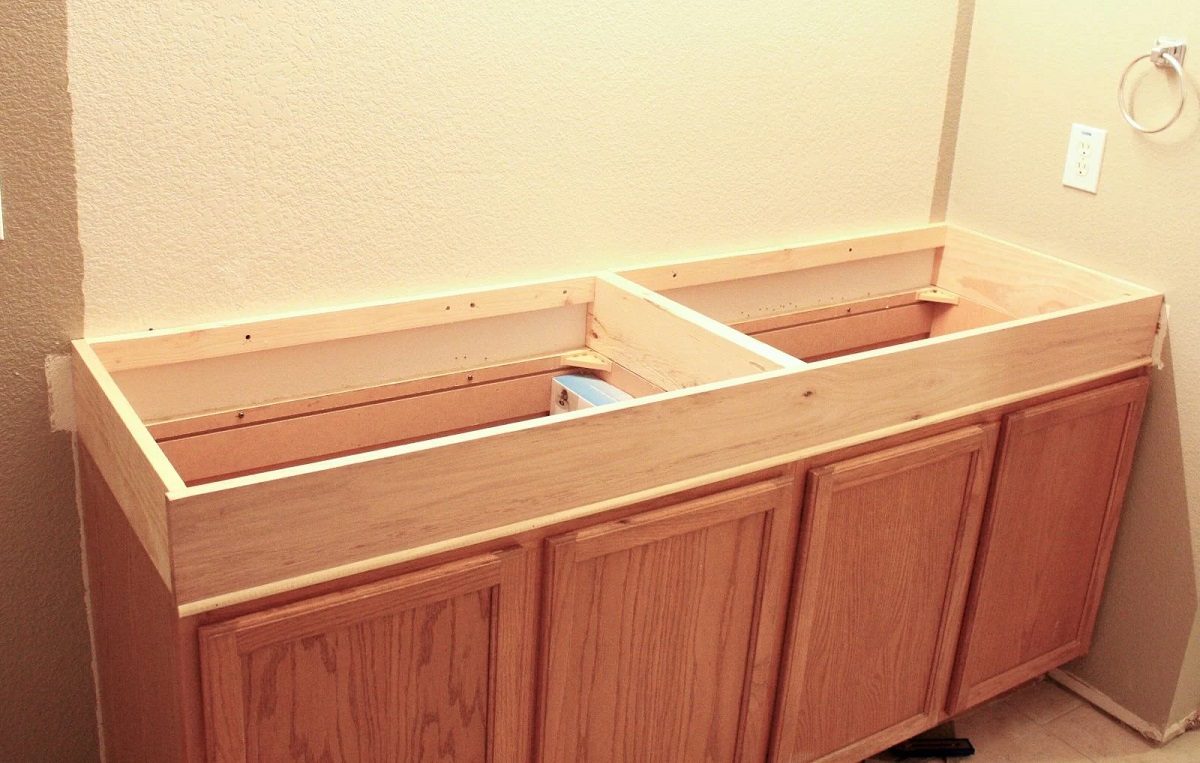

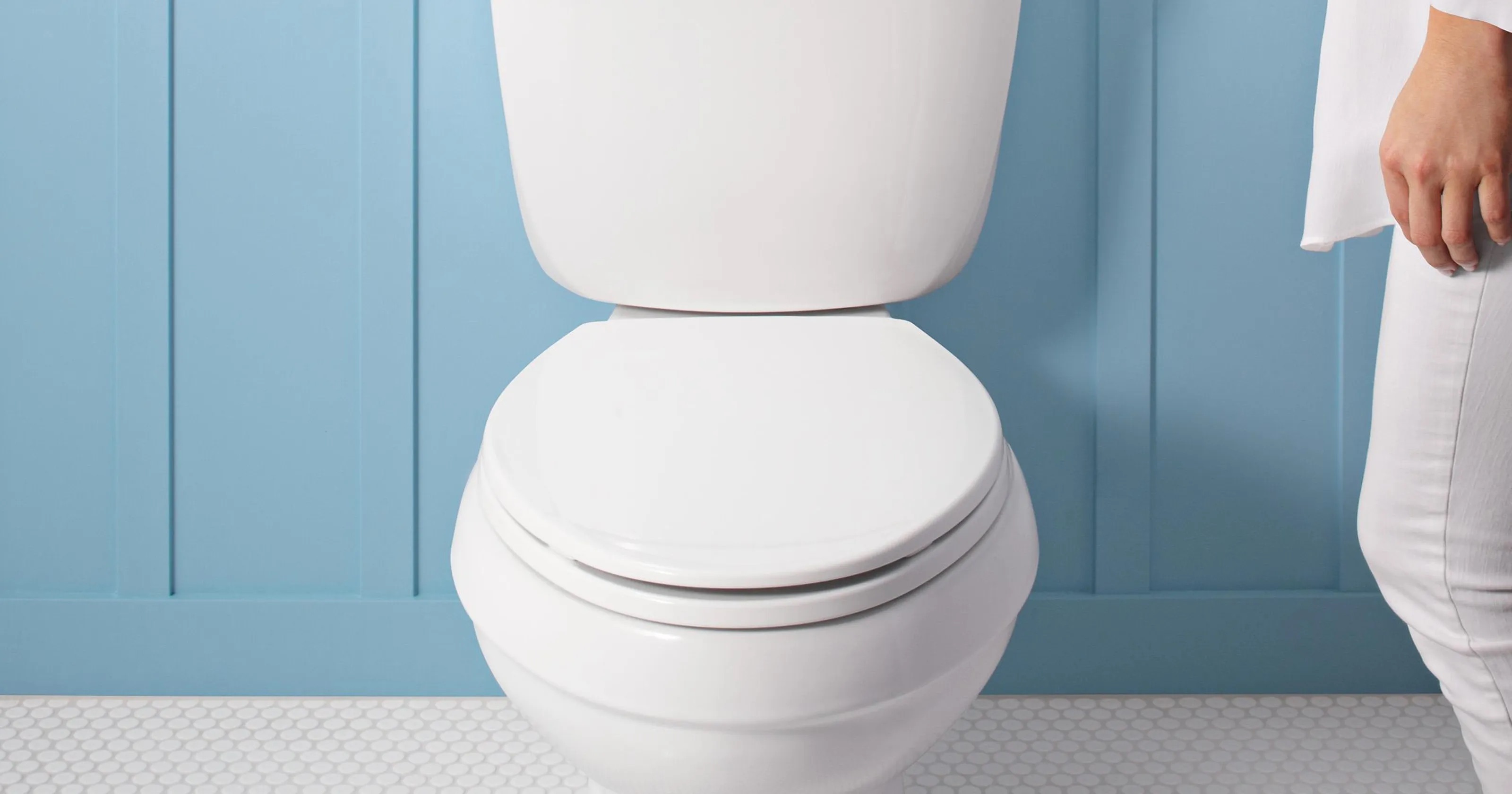
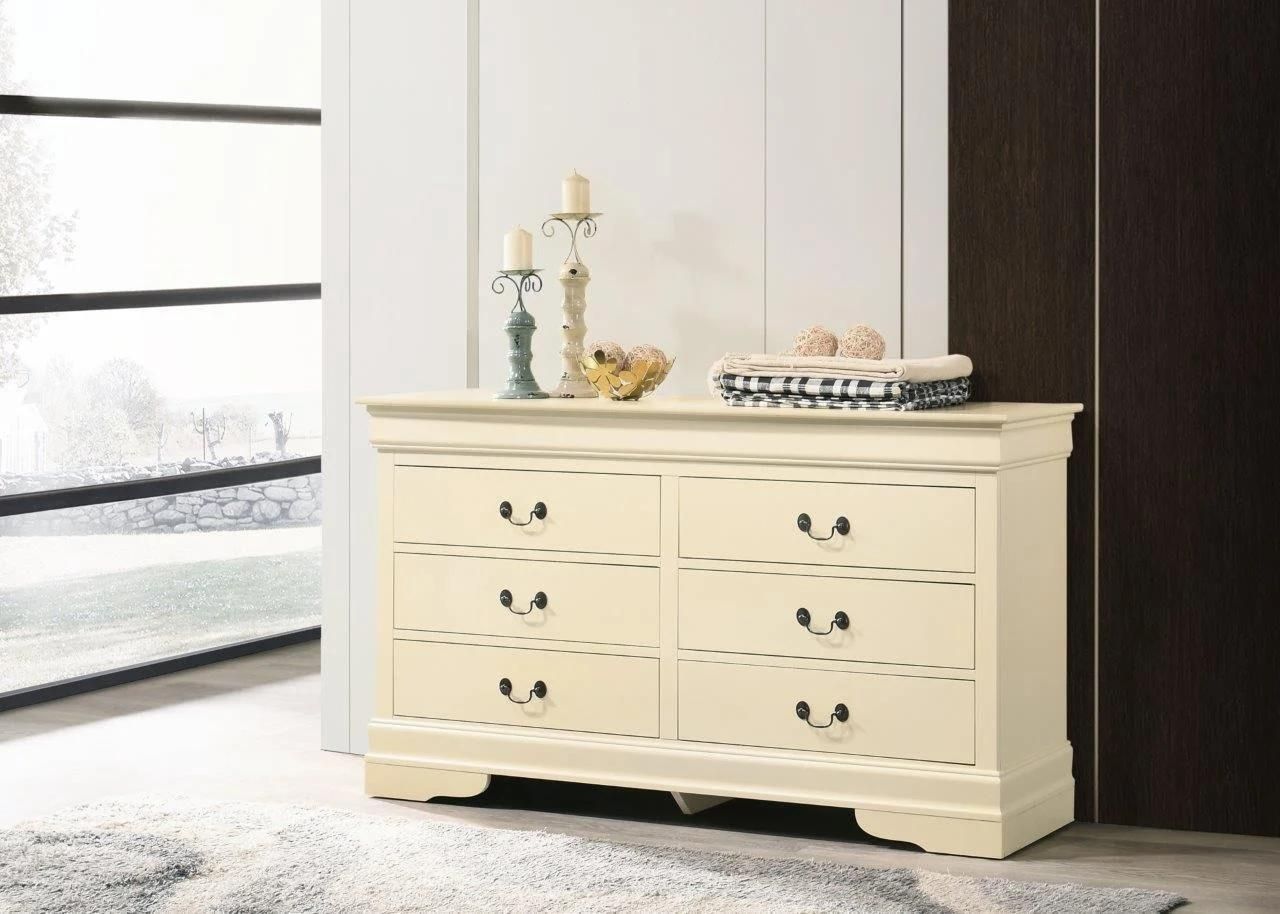
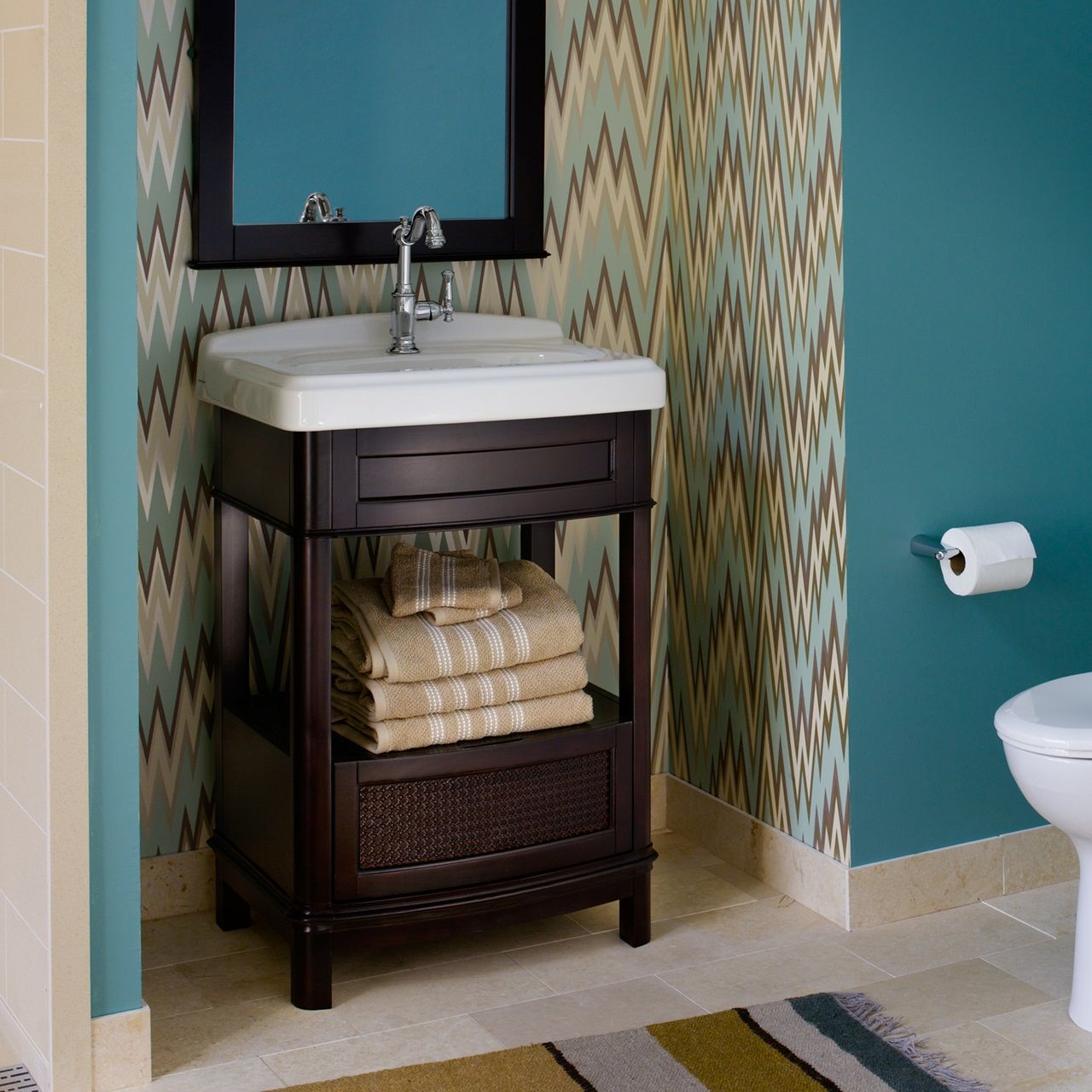


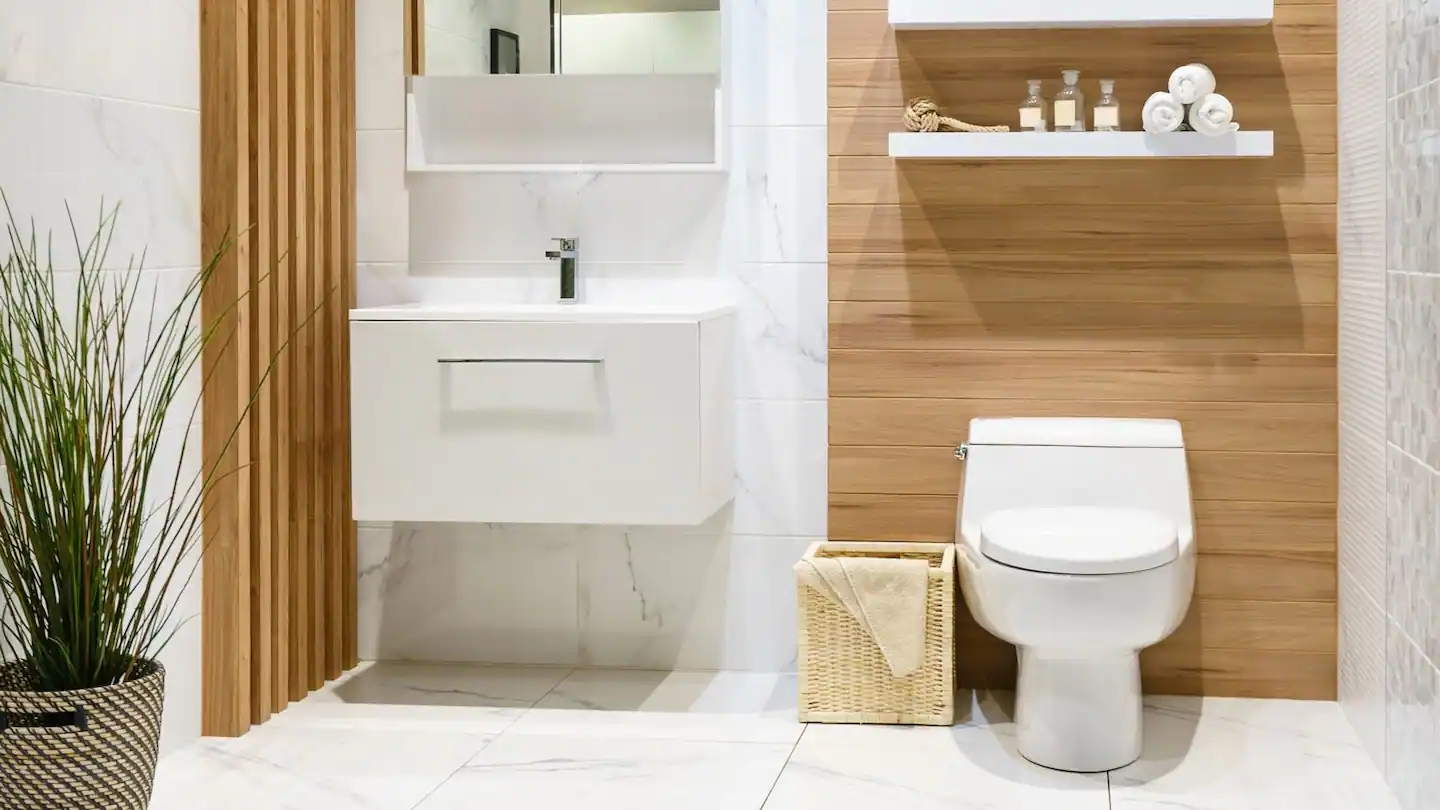
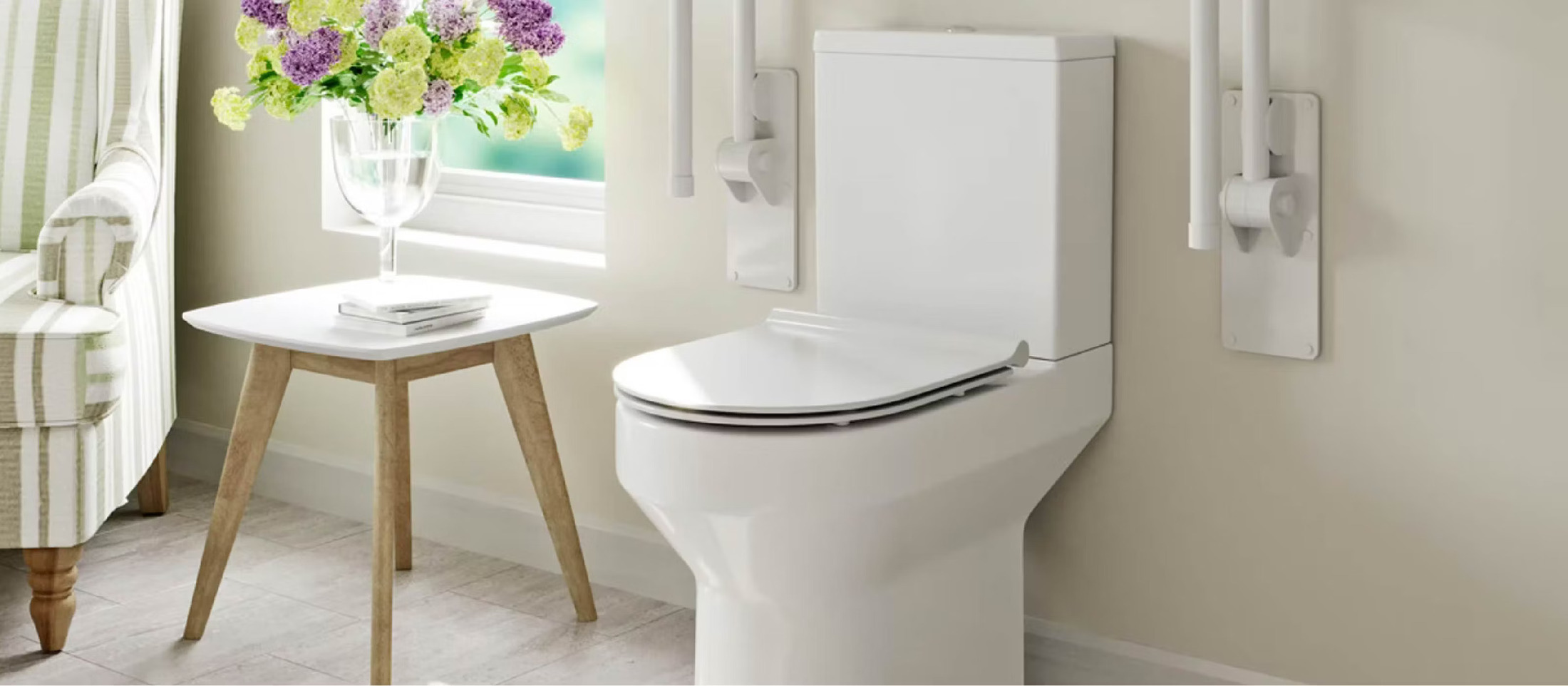
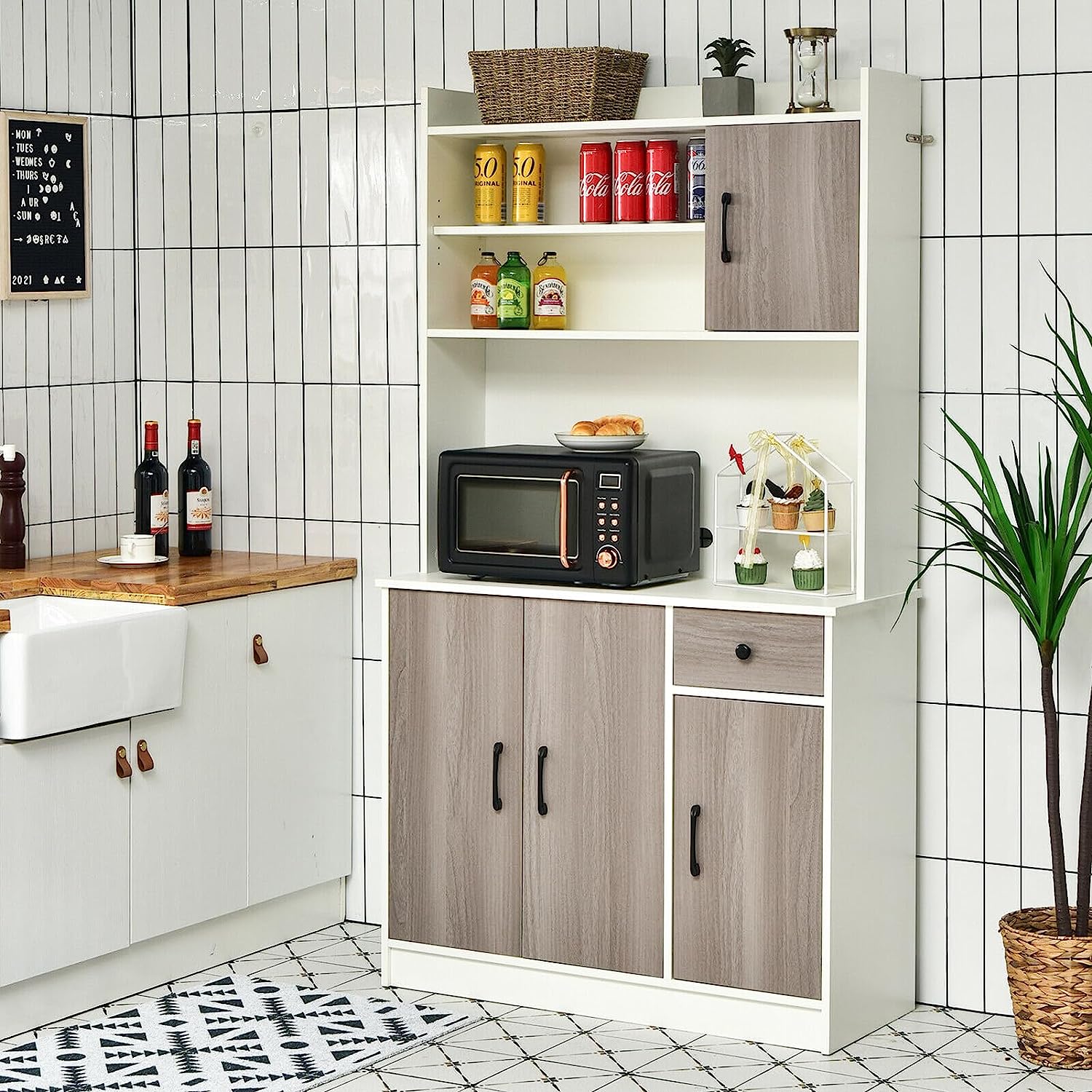
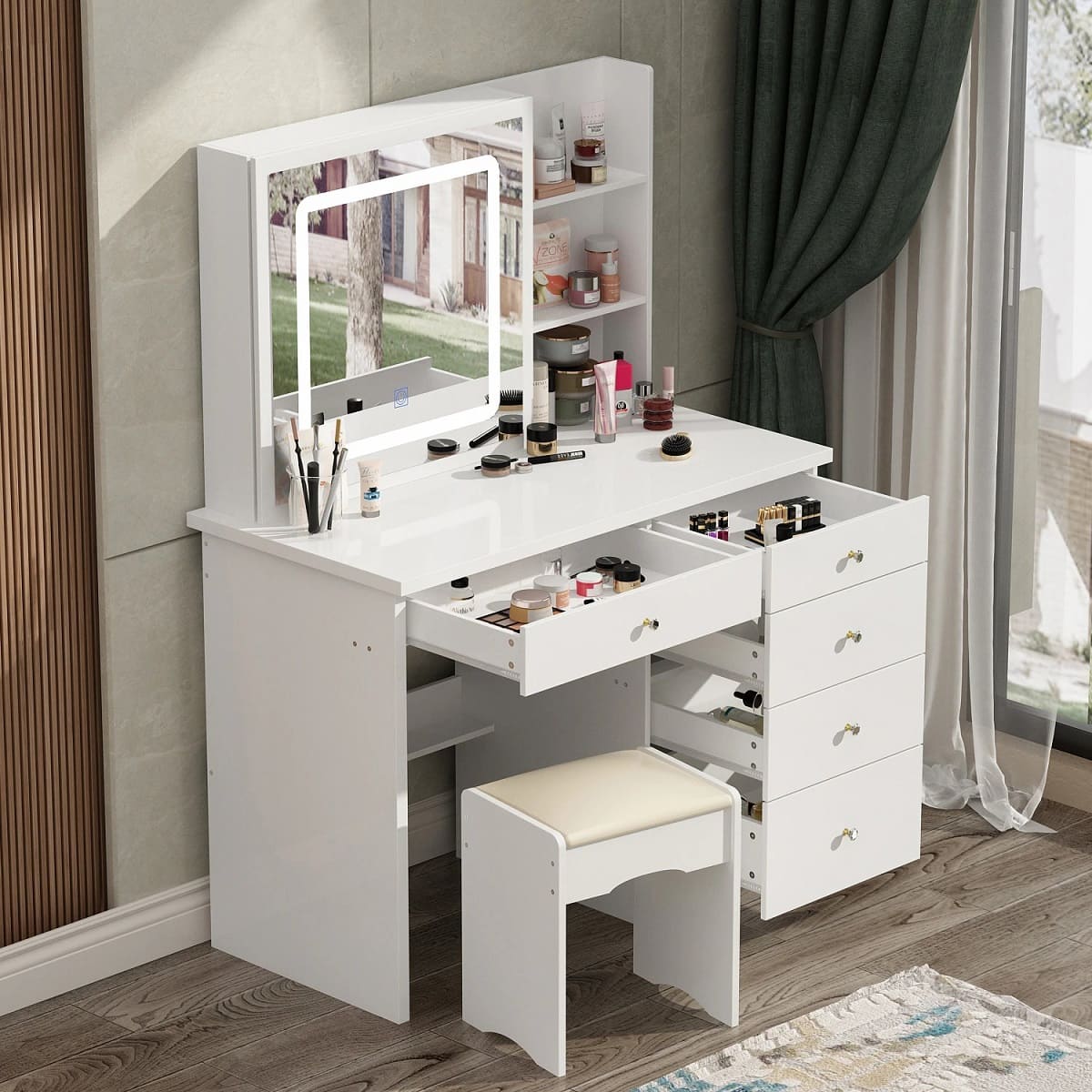
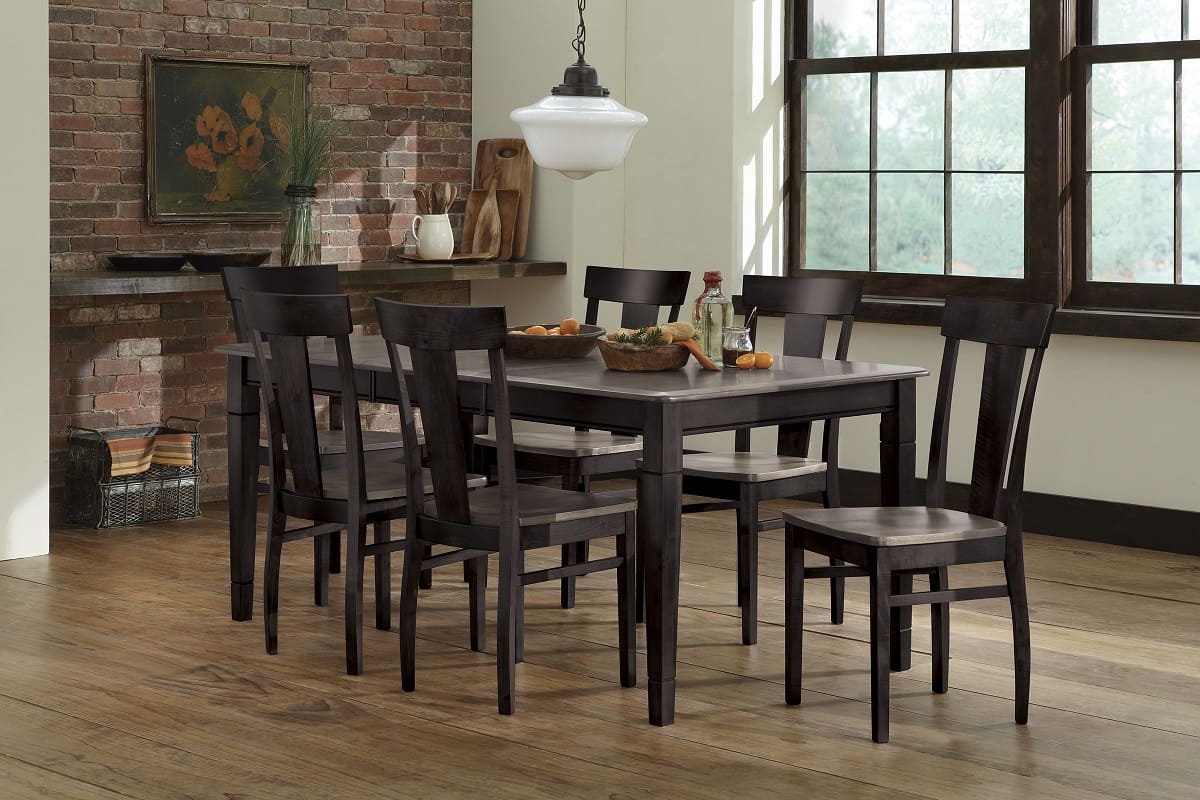
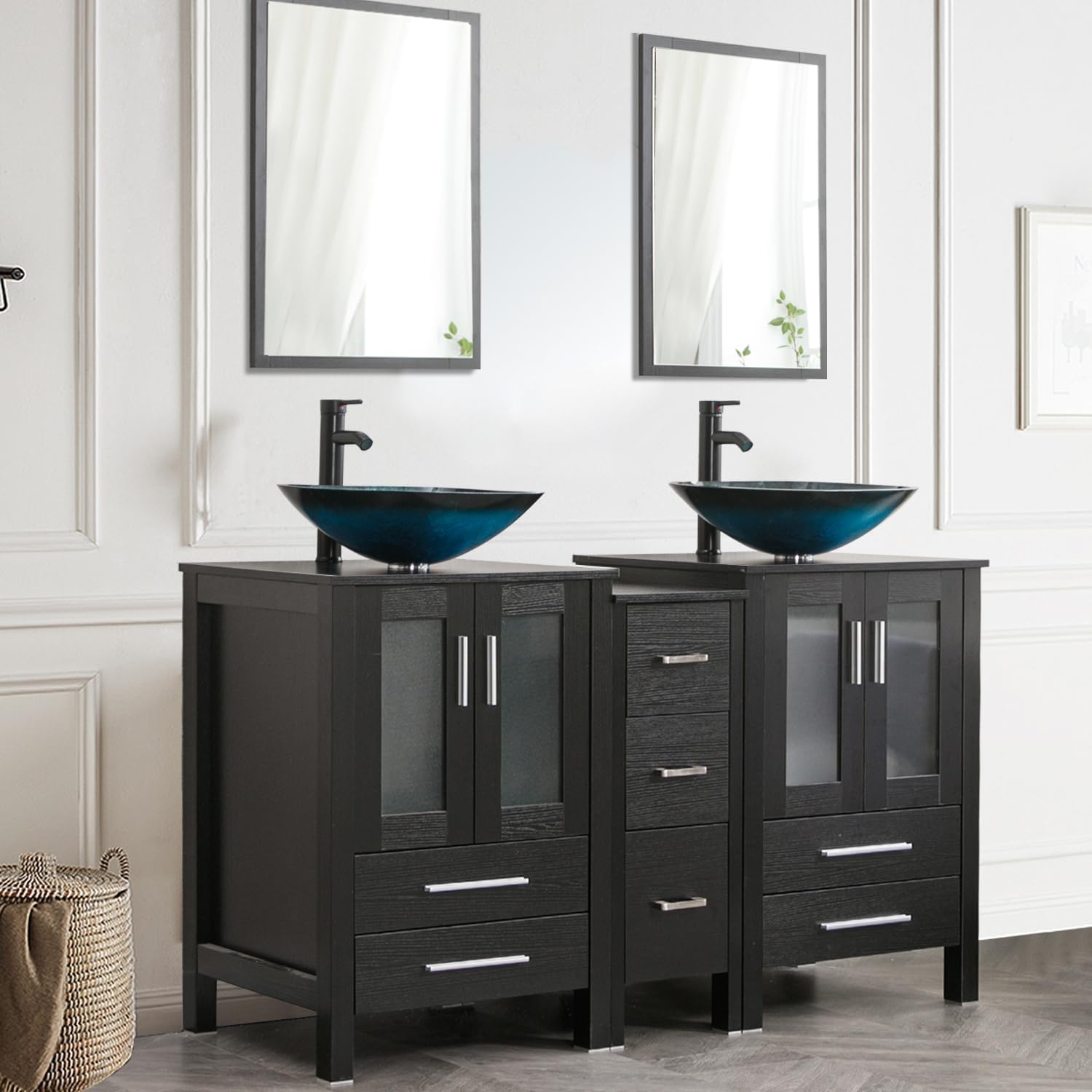

0 thoughts on “What Is The Standard Bathroom Vanity Height”